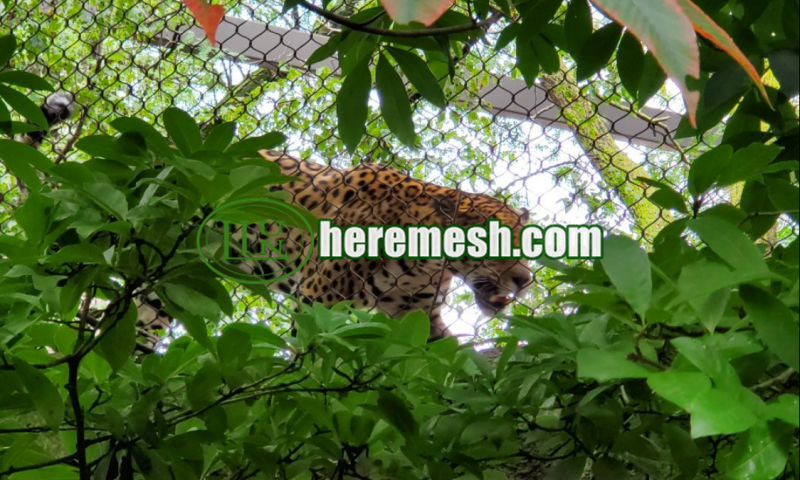Restore wild natural habitat for animals: stainless steel animal fence netting

Share the perfect stainless steel bird aviary wire mesh order
10/16/2024
Raptor Aviary Net Stainless steel Woven Net Order Shipped
10/31/2024Animal cages play a vital role in animal protection, and their use goes beyond protecting animals from harm. At the heart of their design is ensuring the safety of animals and the public while creating a healthy and comfortable habitat for animals. By providing a comfortable and safe environment, animals are protected from potential threats and dangers, endangered species are protected and biodiversity is enhanced. In addition, the invisible stainless steel animal fence netting can realistically restore the wild living environment. It is conducive to the display of animal behavior.
Why design more ecological and natural animal cages for animals?
The design of animal cages has changed significantly over time. At the same time, people pay more and more attention to the natural ecological environment, and the awareness of animal protection is constantly enhanced. All these have promoted the zoo environment to develop in a more ecological and natural direction. Different from traditional captive breeding, it is particularly important to build a wild habitat that conforms to the habits of animals, emphasizes the natural ecology, and restores the wild habitat of animals.
Many endangered species are facing the risk of extinction if they survive in the wild. Therefore, building scientific and reasonable habitats for animals can effectively enhance animal diversity. Secondly, the growth of animals in ecologically healthy habitats is conducive to improving the educational experience of zoo visitors. Visitors observe the animals outside the see-through enclosures, giving them the opportunity to learn about animal behavior and animal relationships. By carefully simulating animal habitats, it fosters awareness of wildlife conservation and helps visitors gain a deeper understanding of the status of endangered animals.
In order to achieve these goals, zoos have also done a lot of exploration in the construction of animal cages. Generally speaking, based on factors such as animal living habits and ecological environment of origin, the zoo maximizes the simulation of wild survival according to the conditions, condenses and creates the feeling of returning to nature, and helps the animals integrate into the new environment more quickly.
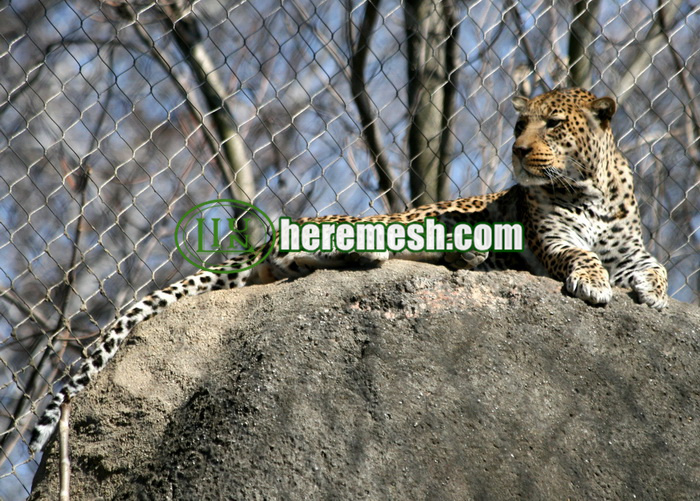
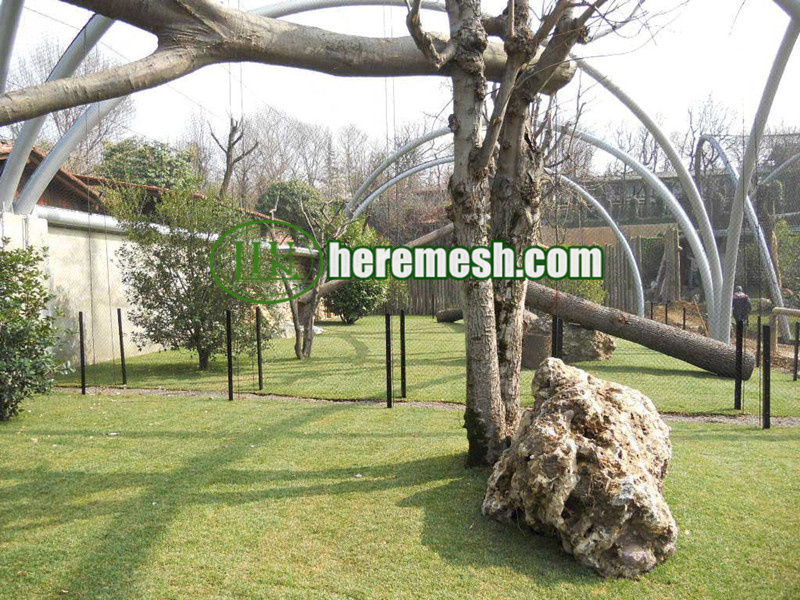
Restoring wild and natural habitats with stainless steel animal fence netting requires the following considerations.
In order to create a more natural environment, the zoo needs to plan for geography, recreational facilities, funding, and cage management.
Geographic environment:
The construction of the exhibition area should be adapted to local conditions and conform to the characteristics of the habitat topography and environment. For example, a large cat exhibit needs to be constructed in a mountainous area with undulating heights. In the exhibition area, many stones located in the high terrain are set up, so that the animals can observe the low environment from the high place and restore their natural nature.
At the same time, a waterfall controlled and purified manually was constructed in the exhibition area to simulate the ecological cycle system in the wild. In addition to the hillside terrain, the exhibition area also needs to be planted with climatically appropriate vegetation for the animals to climb and live in.
In order to strengthen the safety protection of the animal exhibition area, the administrator can also set up animal cage netting on the periphery of the animal exhibition area. Invisible stainless steel animal fence netting can protect visitors as well as animals without obstructing their view.
Recreational facilities:
The activity range of each type of species in traditional zoos is limited, which makes the survival space of animals too limited. In order to improve this situation, the exhibition area can try to restore the real living environment based on the design of air tunnel mesh for animals. Set up a certain number of tunnel mesh above different animal exhibits to connect different animal exhibits. Such a facility is conducive to enhancing the interaction between animals, increasing the area of animal activities, and enabling animals to experience the habitats of different cages. This facility largely enhances the display of animal behavior, avoids stereotypical behavior and restores their natural wildness.
Funding:
When considering the use of stainless steel animal fence netting, a variety of factors can affect the overall cost, and an understanding of these factors is essential for effective budgeting. Key considerations include the quality of the materials used, the size of the net and the complexity of installation. Material is one of the most important determinants of price. Stainless steel rope netting is usually more expensive because it offers greater durability and resistance to environmental factors. Stainless steel wire rope netting is more popular in zoo building materials because it offers longer life and rust resistance. Over time, stainless steel rope netting retains its original properties. The size of the mesh also plays a key role in determining the price. Larger mesh sizes require more material, which naturally increases the total cost. Additionally, thicker rope diameters provide more security for the animals while also increasing the cost.
Cage management:
Considering the complexity of species, designers need to subdivide different species and accurately classify exhibition areas for animals. Usually, different species have different habits and different habitats. When designing cages, designers take into account the behavior and preferences of the animals to facilitate the care and management of the animals in the future. For large aggressive animals, professional installation is necessary. Professional installation ensures that the cage mesh is securely installed and personnel are safe. For low temperature environments, considering more energy efficient and environmentally friendly heating solutions will help the animals safely survive the cold in their cages.
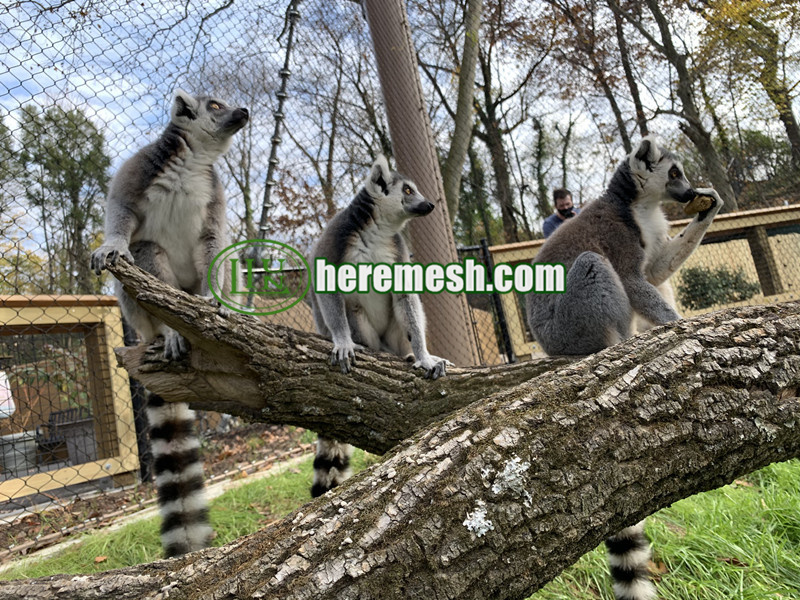
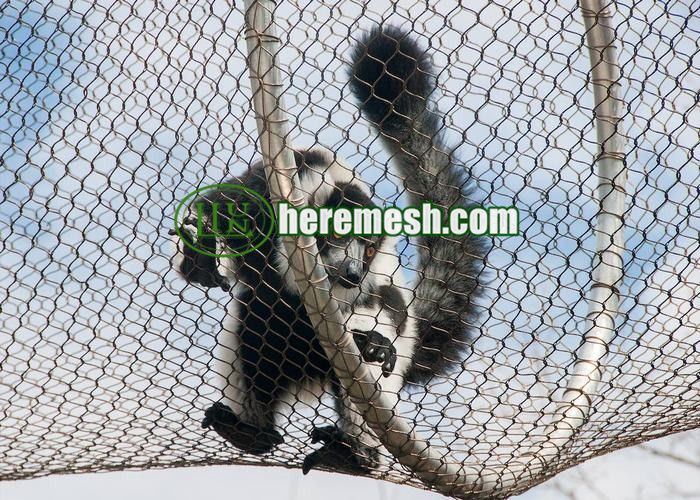
Advantages of stainless steel animal fence netting
Animal protection sites are increasingly utilizing advanced materials. Stainless steel cage mesh provides durability, visibility and security without compromising the aesthetic appeal of the enclosure. Wire rope netting is more than just protection; it is an important part of restoring wild habitats. For large animals with a wide range of movement, as well as birds, the mesh is invisible and transparent and does not obstruct the animals’ view. It is also used in the construction of large paddocks and can be customized in size to fit perfectly.
The mesh is designed to be flexible and bendable, making it suitable for all terrain conditions. Similarly, stainless steel woven rope netting can be shaped in any way. The netting can be made in the shape of tunnel to connect different species exhibits and promote animal interaction, thus satisfying basic behavioral needs. Of course, one of the most advantageous points is safety. Wire rope netting is made of 7×7 strands of woven stainless steel wire rope for a strong and durable structure. The thicker the wire rope diameter the more pressure it can resist.
Future development of natural ecological animal cages:
Zoos are not only institutions and organizations that exhibit and manage all kinds of wild animals, but also an artificial ecosystem. The development of modern society requires that it should take wildlife and ecological protection as the primary purpose. Therefore, the zoo should be implemented into the design of zoo venues to further improve animal welfare, enhance visitors’ awareness of ecological protection, and build an ecosystem in the zoo.
The design of animal cages that restore wild nature not only enriches the living environment of animals and improves their welfare, but also enhances the interaction between visitors and animals, improves their real understanding of animals, and builds a sustainable, multi-faceted ecosystem.
Before transforming the animal cages, the relevant departments of the zoo should hire zoologists, ecologists and landscape scientists to reasonably analyze and explore the living habits of animals, and create all kinds of landscape elements and related supporting facilities needed by animals. In the process of planning and design also need to take into account the tourists as a key factor. It is necessary to avoid the interference of tourists on the animals, animals on the tourists dangerous behavior. In the exhibition design draws on the relevant experience of the excellent zoo, the animals are placed in a completely naturalized environment, the animals and the environment as one. The realization of all this can not be separated from the zoo and the relevant departments of policy, funding, technical support and mutual exchanges and learning between zoos.
Email:[email protected]/[email protected]
Website:www.heremesh.com


